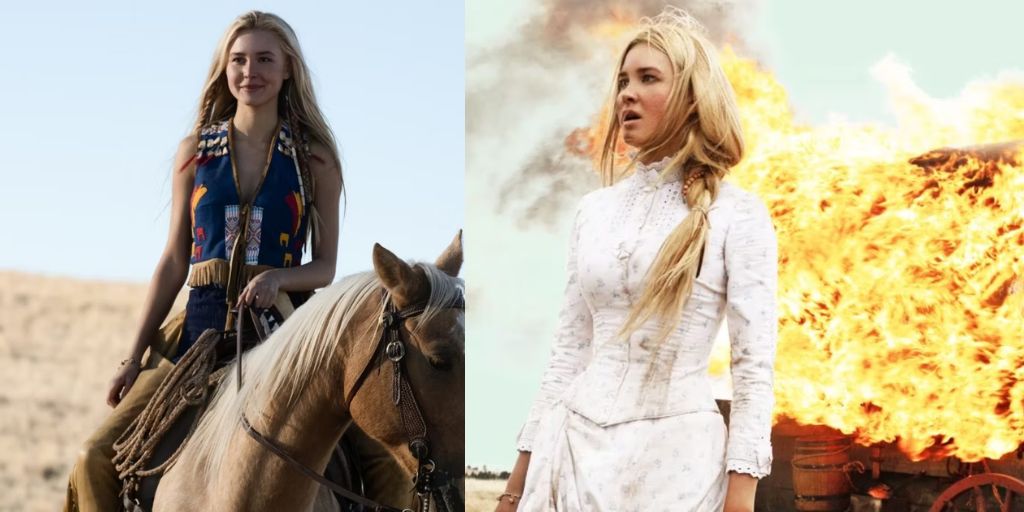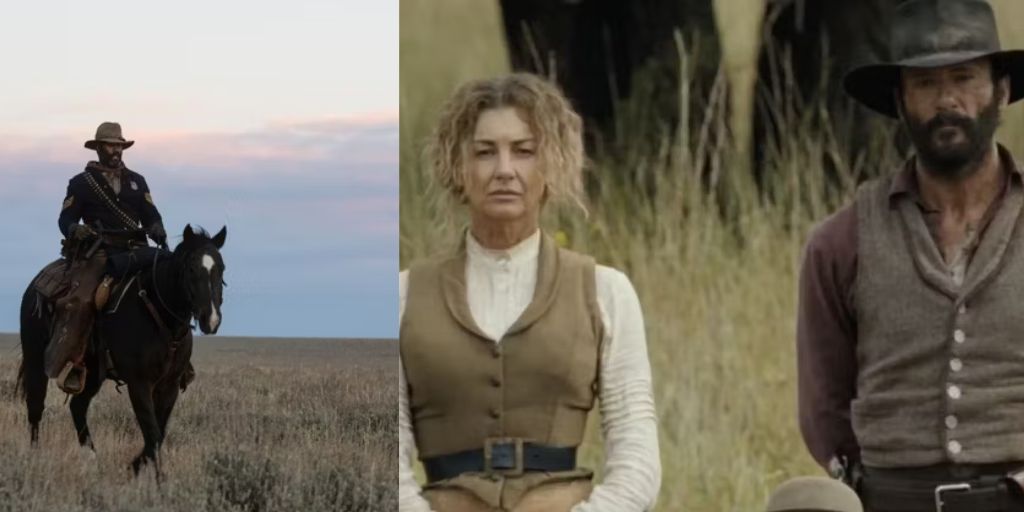When it comes to historical accuracy in movies and television, Taylor Sheridan’s 1883 might not be the first example that comes to mind, especially since the characters are fictional.
Still, this acclaimed prequel to Yellowstone includes several groups who moved to the frontier, such as large families like the Duttons, new German immigrants, and Civil War veterans. Although the Oregon Trail was no longer in use by the time the show is set, the journey shown is quite realistic.
The hazards faced by immigrants are depicted as more everyday problems rather than violent encounters. The series features a higher casualty rate than what was typical, which makes a sequel unlikely, but it balances the romanticized view of the West with historical reality. For those who undertook such a journey, it was often a challenging experience, but the freedom to start over made it worthwhile.
In 1883, Settlers Come From a Variety of Places
When we think about the Old West, we often picture rugged men travelling long distances on horseback through dangerous terrain.
While this image holds some truth, it doesn’t capture the full reality. Instead of individuals fleeing government control, many who moved west after the Civil War did so because of land grants given by Congress. However, 1883 does accurately show who travelled west in search of a better life.
Some settlers were indeed Civil War veterans like Shea (Sam Elliot), but many immigrants came from Europe. The series doesn’t address the many former slaves who also moved west during this time.
Another important aspect of Western travel that 1883 gets right is the mode of transportation. Contrary to our image of the West as wild and untamed, immigrants relied on railroads to reach the Great Plains. The show partially reflects this, showing people travelling in wagon groups.
However, there is a timing issue. After the Dutton family travels by train to Fort Worth, they use the Oregon Trail to reach their final destination. In reality, the completion of the Transcontinental Railroad in 1869 made wagon travel outdated, and the trip to Oregon took only days, not months.
By the time the series is set, the Oregon Trail used by the Dutton family was mostly obsolete, and the Wild West era was nearly over.
How 1883 Shows the Hardships Settlers Faced
Although 1883 is not based on real people, it effectively portrays the actual experiences of those who travelled west.

Despite our view of the West as violent, the dangers settlers faced were often more mundane. Without a local government, traveling groups enforced their own rules or hired private militias for protection, like the Pinkerton Company that Shea joins.
The series shows this form of frontier justice when Shea punishes thieves by banishing them. Native attacks were rare and usually occurred during military expeditions by the US Army. However, the Comanche attack depicted in the series was a retaliatory strike against settlers whom they mistakenly believed were responsible for a massacre.
Most casualties on the Oregon Trail were due to disease, rough terrain, and wagon accidents, not violence. Although these new territories were unfamiliar, the journey could be relatively peaceful for those who were prepared and left before June.
The series shows many of these hazards through the immigrant party, who struggle with the elements, wild animals, and dangerous river crossings. For those injured, medical care was both primitive and scarce, making injuries potentially fatal.
1883 dramatizes these challenges well, such as when Elsa Dutton (Isabel May) dies after being wounded by a Comanche arrow. Josef (Marc Rissmann) undergoes a similar ordeal, losing a leg and enduring an amputation without anesthesia after the death of his wife in a riding accident.
How 1883 Reflects the Spirit of the West
Few film genres have been as romanticized as Westerns, known for their tales of rugged independence and freedom from government control. At its height in the 1940s, the Western genre shaped our modern view of the era in ways we might not fully realize.
Although 1883 is set forty years earlier, it feels more accurate than many other Westerns, capturing both the best and worst experiences of those who lived through it. While historical realism is rare in Westerns, 1883 achieves this by raising the stakes for those on the journey.
It is more than just a prequel to Yellowstone and stands out as a compelling piece of historical fiction. The few inaccuracies it has are minor, and it offers an attractive look at an era that remains a significant part of American mythology.

Thematically, 1883 captures what makes Westerns so intriguing by acknowledging the myth of the Wild West and its impact while still showing its dangers. The world of 1883 is filled with real hazards that led to actual deaths, but it is also a place where romance can thrive on the Great Plains, echoing themes from the original series.
Despite the hardships, characters like Thomas (LaMonica Garrett) and Noemi (Gratiela Brancusi) manage to start new lives. The series finale is bittersweet but accurately reflects the spirit of the West that settlers experienced and the new world they encountered in an era where people rarely ventured beyond their home state.
One of the most accurate aspects of 1883 is its understanding that the West could be both inspiring and frightening. 1883 is available for streaming on Paramount+ in the US.
1883 provides a nuanced depiction of Westward expansion, blending historical accuracy with fiction. While the show features fictional characters, it reflects real challenges faced by settlers, including reliance on railroads and everyday hazards rather than violence. It captures both the romanticized and harsh realities of frontier life during that era.





